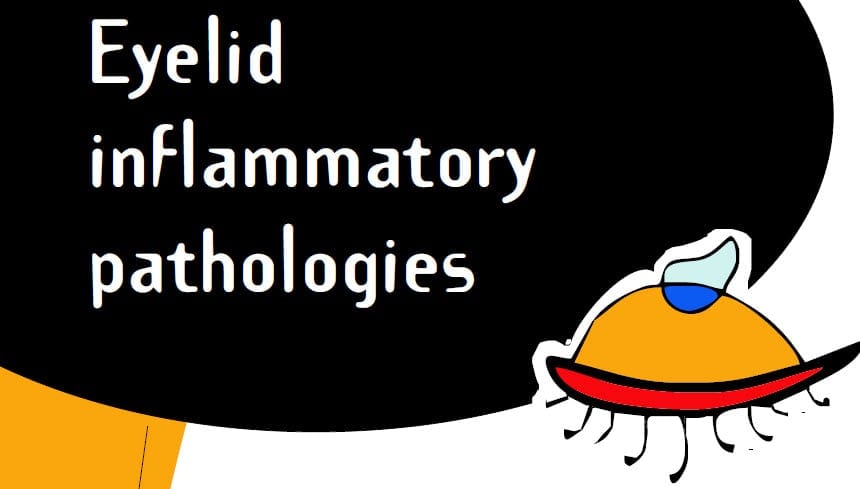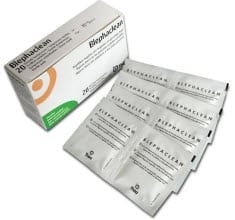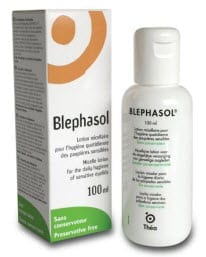
10 Dec Blepharitis
Blepharitis is essentially an inflammation of the eyelids.
It is an extremely common and often misunderstood condition. It can be overlooked and un-diagnosed by doctors, optometrists and ophthalmologists, despite the significant discomfort it can result in for the patients. However, the good news is that it can be easily managed.
What causes it?
The exact cause of blepharitis is largely unclear. It occurs when your natural oils and other products normally secreted by the eye and eyelids, build up on the lid surface and at the base of the eyelashes. In essence there are two types, anterior (outer lid margin) and posterior blepharitis.
Referred to as Meibomian Gland Dysfunction MGD. It can be associated with a bacterial infection. Brolene, an over-the-counter antibiotic, recommended frequently by pharmacists, GPs may resort to Chloromycetin or Fucithalmic which may help but will most likely only be a short term solution. Like a lot of parts our body bacteria live without concern, it is the proliferation and over abundance that can arise to physical symptoms.
Blepharitis is largely a chronic condition, thus the treatment regime is only beneficial when applied regularly. Patients will generally report the lid scale is most evident in the mornings due to the dehydration of the lid glands overnight. Lid hygiene at the start of the day brings the best results. Fig (a) shows the typical crusting of the lids when the excretion dry out. A highly effective treatment is the use of heat packs to restore the natural consistence of the lid oils, our most popular heat pack is the Blephasteam goggle from Thea.
How do I know if I have blepharitis?
Some of the main symptoms of blepharitis are:
- Itchy Eyelids
- Burning sensation
- Red or swollen eyelids
- Crusty debris from eyelids
- Sensitivity to light
- Loss of Eyelashes
If you experience any of these symptoms you may have blepharitis, however it is important to have an examination to confirm this. Research shows 80% of people with blepharitis have issues with dry eyes, so we devised this evidence based, 5 step treatment plan.
Targeting Blepharitis.
At OpticalRooms, we have great experience treating both types of blepharitis, in particular with the product range from Thea Pharmaceuticals. The three main products they supply are:

Blephaclean Wipes
These cleansing wipes are preservative and perfume free, suitable for sensitive skin as well as contact lens wearers. They act as an anti-bacterial and have a mild anti-inflammatory action, as well as containing agents which help to repair, moisturize and soothe the eyelids. We recommend these as the first line of treatment due to their anti-inflammatory properties.
Thea have recently introduced a more advanced eye lid cleaning wipes that targets the common parasite Demodex call Blephademodex
Blephasol
This is a cleansing solution which can be applied to the lids using a smooth cotton pad, usually on a long term on a daily basis. Just like the wipes, they are preservative and perfume free, but they do not contain the anti-inflammatory agent. This makes the solution our second line of treatment, as an upkeep for chronic blepharitis, It is also a little more economical than the wipes for long term use.
This is a soothing gel in a pump dispenser. Again, this product is suitable for sensitive skin. It can be applied to the lids and left on over night, or it can be rinsed off with water. This product provides a sensation of freshness, and softens and soothes burning eyelids. It is non-greasy, and ideal for those who would like a longer-lasting effect. It appeals to a lot of patients to apply this to the lids at night and wash off in the morning.
Occasionally, following a review of the progress being made, moisturizing drops or a heat pack may need to be added to the treatment regime. It is important to avail of a dry eye/blepharitis assessment, to ensure that you are using the correct products for you. Blepharitis is often something you are prone to and it will flare up needing more treatment than usual and will subside where a low maintenance regime will suffice.
Having an understanding of the condition and finding the right product to treat this condition allows people to self manage this condition relatively easily.
